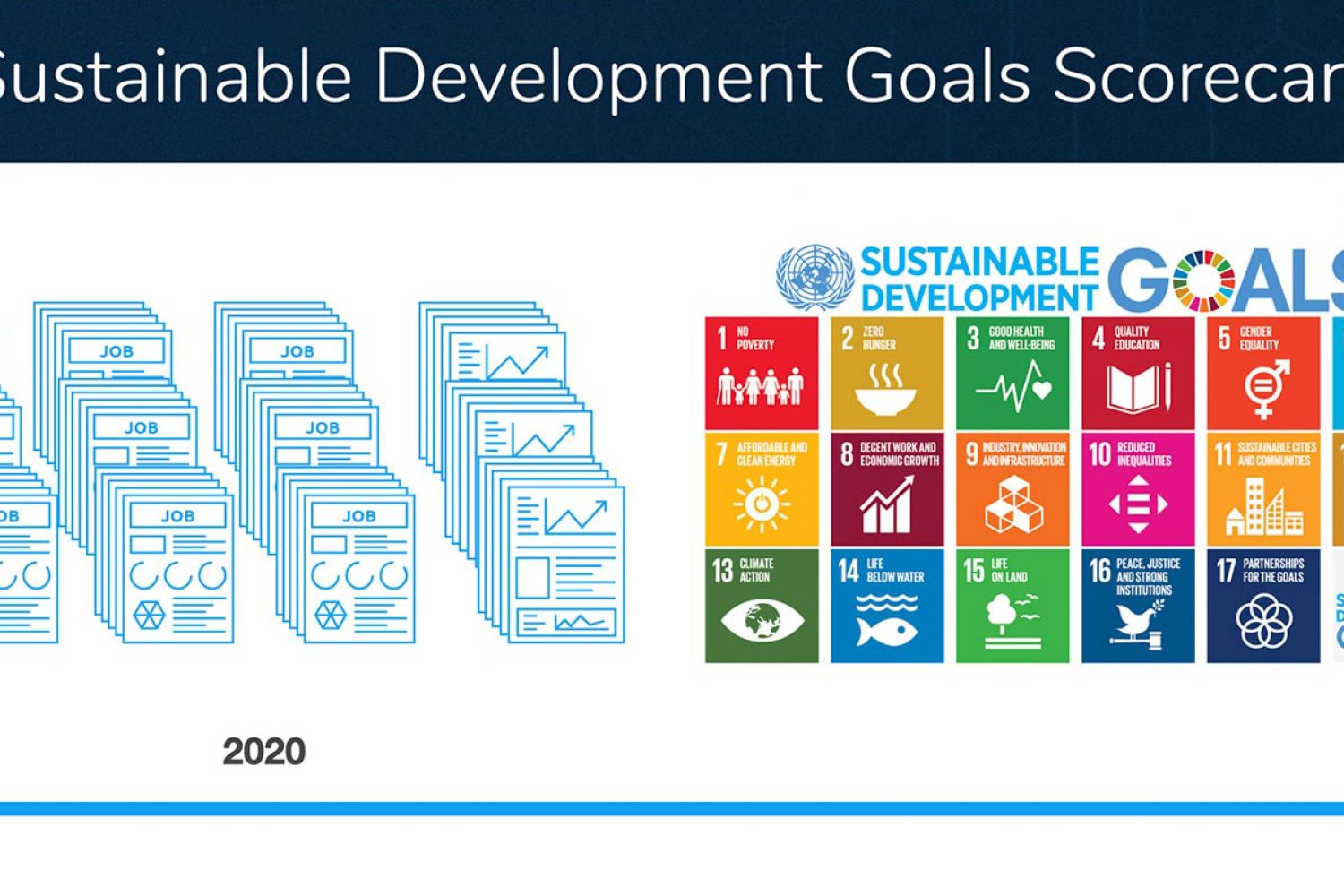It seems implementing Sustainable Development Goals into real-world actions as well as strategies has been a challenging task for many companies, organizations, and nations. We are lacking affordable tools that help in measuring and evaluating the SDG activities.
Our contribution to support SDG compatible development is a Balanced-Scorecards-type of instrument that enables every individual, company, and organization to start a measure-based continuous development of the processes. Idea is that a relevant document (curriculum, course description, project plan, etc) can be dropped as it is written (written language) into the SDG Scorecard machine, that processes the text against goals and generates a report in five minutes.
Harri Ketamo presented the SDG Scorecards in his keynote at https://www.ainordic.com/ conference. The topic is presented in the video at time 08:30.
The approach is based on a combination of unsupervised machine learning and reinforcement machine learning. First, the AI is taught with the United Nation’s SDG documents: definitions, descriptions, indicators, and examples. This process is based on Self Organising Networks type of unsupervised machine learning. After that, the raw-version of the SDG Scorecard has been tested with a diverse set of example documents (good, bad, and completely irrelevant documents). During this testing, the AI is trained in terms of bayesian (reinforcement) learning to recognize features that are common to good examples and how those features differ from bad or irrelevant examples. This reinforcement learning process is a continuous process and so enables SDG Scorecard to get better all the time.
Headai’s SDG Scorecards are used for strategic decision-making. They enable communicating sustainable themes and starting a measure-based development towards Sustainable Development Goals.
–Harri Ketamo, Founder & Chairman of Headai
We have not applied Deep Learning AI at all. Mainly for two reasons: First, If using deep learning, the amount of valid data (e.g. UN definitions) is not enough for model building (and using a non-valid model is not ethical). Furthermore, with deep learning, we couldn’t get any explainability of transparency into AI’s decision-making process, which would affect negatively to non-discriminatory and gender-equality aspects of the model (e.g. SDG 5, 10, and 16).
Join the discussion on social media:

